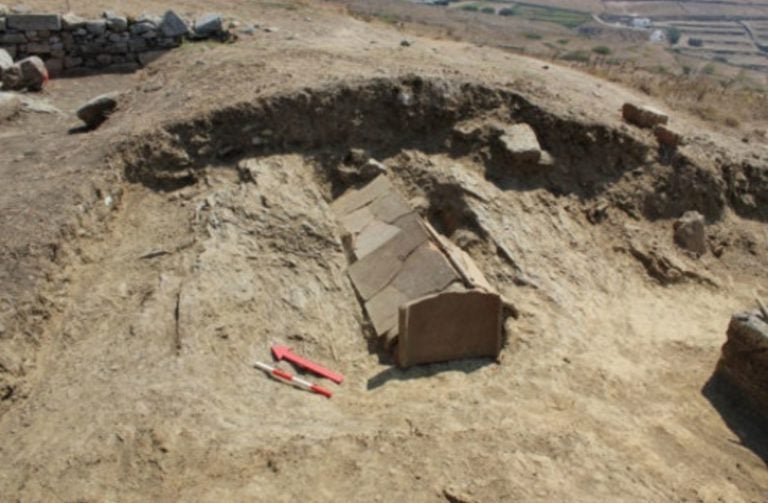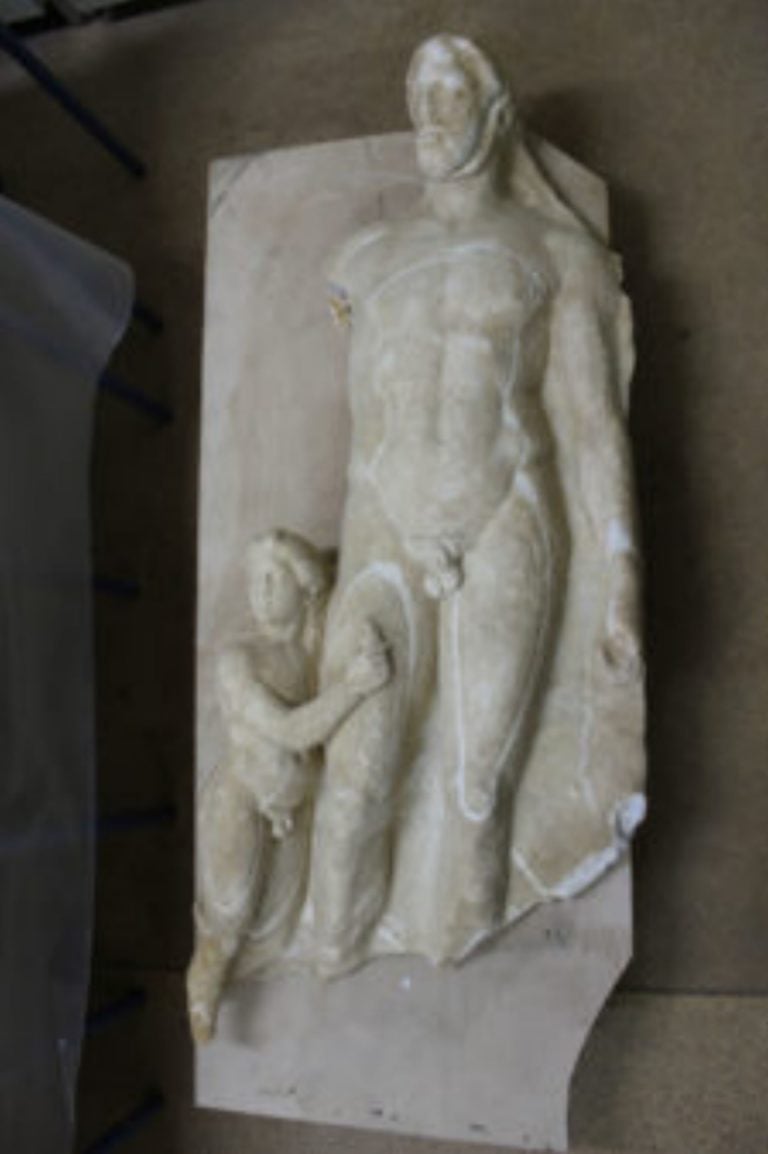Greece’s Ministry of Culture announced on Friday that two important discoveries have been unearthed on Evia and Tinos islands with the support of the Institute for Aegean History (INSTAP) and the University of Athens respectively.
Following a two-year excavation near the town of Karystos on Evia (Euboea) an important prehistoric settlement dated mainly to the Late Neolithic Age was discovered.
ALSO READ: Five major ancient shipwrecks discovered off small Greek island in the Aegean
The settlement presents evidence of habitation and use both during the Late Neolithic and in the beginning stages of the Early Bronze Age, while it is believed to be able to provide valuable information to archaeologists about the details of human life and the technology used during that time.

According to the report the buildings have stone walls, stone tables and desks, and there appears to be an oven alongside an array of portable objects. The excavation team, whose project is funded by the Norwegian Institute of Athens, has uncovered two clay anthropomorphic figurines, several polished and cut-stone tools, artifacts made of different types of stone as well as human and animal bones.

Meanwhile, a grave steles site dated back to the Classical Years were discovered during another excavation conducted at a Classical era cemetery in Xobourgo on the island of Tinos.
The steles are considered to be of high importance as they will provide information on the classical sculpture history of the island. These high quality works, several still intact, are the link between the history of ancient sculpture and the tradition of modern Tinos sculpture.

“The cemetery is situated at the southeastern foothills of Xobourgo and was the main cemetery of ancient settlement that developed in the Classical era,” the Greek Culture Ministry’s announcement wrote.
“The settlement, established just before 1,000 BC, was surrounded by huge walls and was initially used as ‘refuge settlement’. Later, it developed into the most important settlement of Tinos which constituted the main economic and political centre of the island until its abandonment at the end of the 4th century BC.”
ALSO READ: The ancient past of Peristeri will soon be open for exploration!









